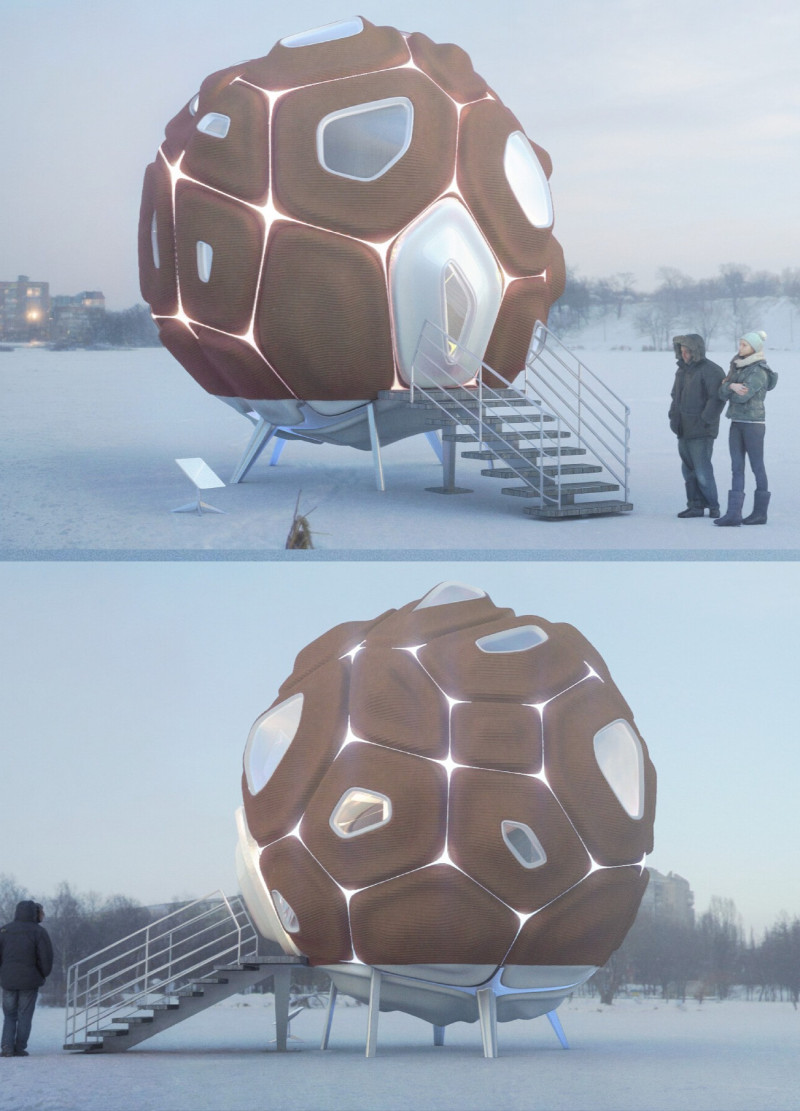5 key facts about this project
At the core of the project is a multifunctional space that accommodates a variety of uses, from commercial areas to community gathering spots. This multipurpose approach ensures that the building not only serves its intended purpose but also encourages social interaction and collaboration among users. The layout is designed to maximize accessibility and flow, allowing for seamless navigation between different functional areas. As one enters, they are greeted by an inviting foyer that serves as the heart of the project, setting a welcoming tone and enhancing the visitor experience.
The architectural design is characterized by a harmonious blend of materials that convey a sense of warmth and integrity. Predominantly featuring a combination of concrete, glass, and sustainable wood, the chosen materials reinforce the project’s commitment to sustainability while perfectly aligning with contemporary aesthetic sensibilities. The use of expansive glass elements facilitates natural light penetration, reducing reliance on artificial lighting and enhancing the overall ambiance of interior spaces. Concrete serves not only as a structural element but also as a canvas that highlights the craftsmanship and articulation of the building’s form.
Among the unique design approaches employed is the emphasis on biophilic principles, integrating nature within architectural spaces. The project integrates green roofs and vertical gardens, promoting biodiversity and improving air quality while providing occupants with engaging and calming environments. These design elements blur the boundaries between indoors and outdoors, allowing users to connect with their surroundings and fostering a sense of tranquility amidst the urban hustle.
Attention to detail is evident throughout the project, with carefully designed spaces that cater to various activities and experiences. Flexible meeting rooms and collaborative workspaces encourage innovation, while community zones equipped with comfortable seating and recreational areas create opportunities for social engagement. The incorporation of outdoor terraces further enhances the liveliness of the project, providing users with spaces to relax and enjoy the view of the urban landscape.
The architectural design also incorporates advanced technologies aimed at improving energy efficiency and sustainability. Features such as solar panels and rainwater harvesting systems exemplify the project’s commitment to reducing its ecological footprint while promoting responsible resource use. These technologies are seamlessly integrated into the overall design, showcasing a modern approach to environmentally conscious architecture.
Overall, this architectural project stands as a testament to what can be achieved when thoughtful design principles are applied with sensitivity to user needs and environmental impact. It invites closer examination of its architectural plans, sections, and design concepts, each revealing layers of intention and innovation. As one explores the project presentation, opportunities to engage with the architectural ideas that drive the design become clear, underscoring the importance of thoughtful, sustainable architecture in shaping the future of urban environments.


 Florian Mouafo Zambou
Florian Mouafo Zambou 























